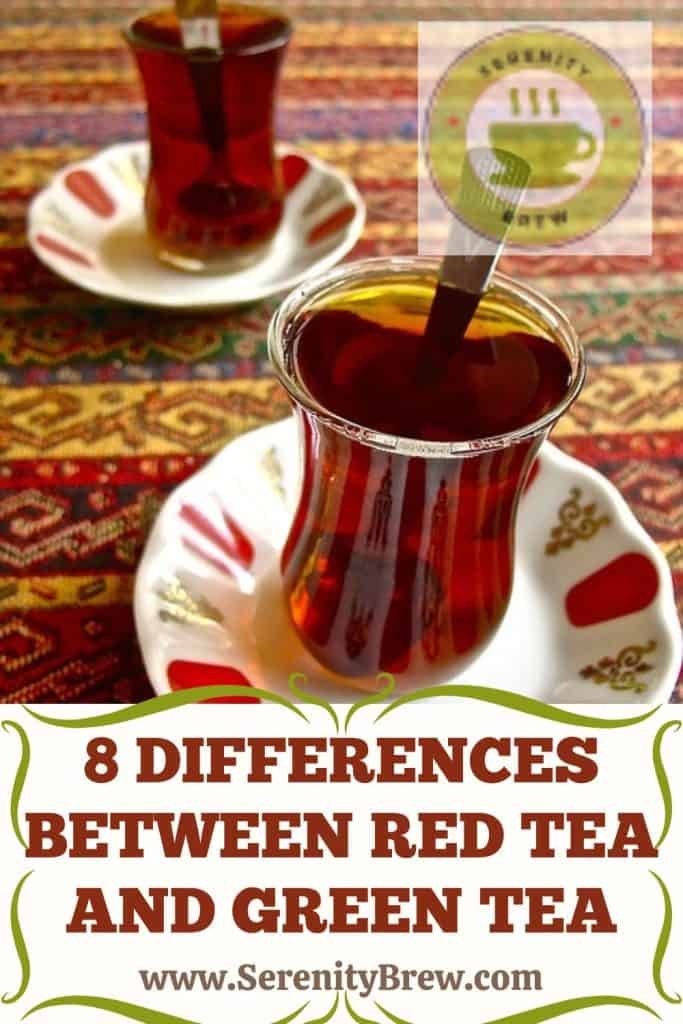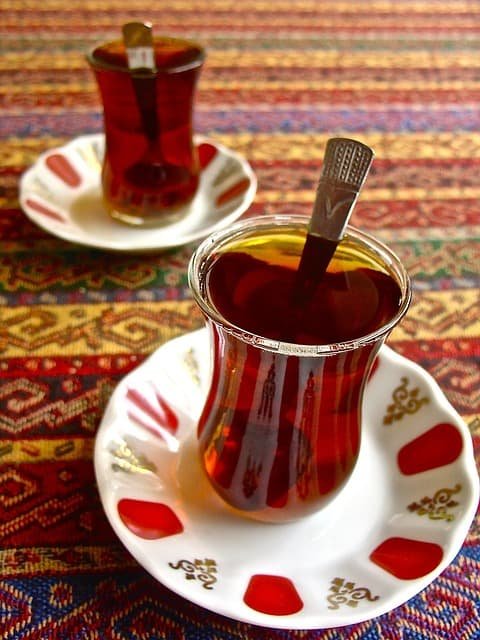
When we choose a tea, we do not do it only for its flavor or color. We look for other characteristics in the infusion that may be beneficial to health.
Both red tea, also known as Pu-erh, and green tea come from the same plant, the Camellia sinensis tree. The health benefits of green tea are related to its high concentration of antioxidants. The benefits of red tea are due to its manufacturing process that includes fermentation. To be clear about the main differences, we have prepared this list for you.
ONE IS MORE PROCESSED THAN ANOTHER
Green tea is made from the young leaves of the tea tree by picking the leaves from the plant and heating them immediately afterwards. Heat can be applied in ovens and with direct steam. The action of the heat prevents the leaves from oxidizing, which allows them to maintain their green color.
The leaves to be used for red tea are those from the oldest trees. These leaves are left to ferment or oxidize completely. The general process here is to roll, cut, or crush the leaves to make the oxidation process more efficient. The leaves are then dried and stored in bamboo barrels for a variable amount of time. It can be 2 years or several decades. Of course, the older, the more expensive.
THE PRICE
Green tea is much cheaper than red tea. In addition to being the most consumed and known throughout the world, it is manufactured in large quantities. Red tea requires much more skilled labor and takes much longer to obtain. Both factors make the final product more expensive.
THE PRESENTATION
Green tea is sold in all shops and supermarkets in loose threads or in sachets of threads. But red tea is frequently marketed in specialized stores in the form of cakes or compacted discs from which the threads are shelled as they are used. This is because after fermentation, the red tea leaves are compacted to remove the liquid between them.
FLAVOR
Of course, red tea and green tea taste slightly different. Red tea is a slightly stronger tasting and thicker tea, and is often consumed with milk to give it a creamier texture and to reduce the amount of caffeine. Meanwhile, green tea is “lighter” in flavor and much fresher. Some describe it as almost herbal, and it is very common to find it in stores mixed with mint leaves and lemon essence. It is usually taken sweetened.
ITS ANTIOXIDANT EFFECT
If there is an effect that all of us look for in a food or drink, it is that it makes us stay young longer. Green tea is a drink that is characterized by its high content of antioxidant substances that delay cell aging. The catechins and polyphenols present in green tea are responsible for this action.
Its great antioxidant effect influences improving the skin, keeping the immune system active, improving liver function, preventing cancer and preventing the aging of neurons (prevent Alzheimer’s and Parkinson’s).
Red tea has less antioxidant capacity because a part of these components have been lost during the aging process. Since the amount of antioxidants in tea is very high, although it is less in red tea than in green tea, it is still much more present than in coffee, for example.
ITS SLIMMING ACTION
Red tea has an important action at the level of fat cells that we store in the body. It suppresses the synthesis of fatty acids and decreases the process of lipogenesis (creation of fat by the liver). In addition, Pu-erh red tea has been clinically shown to improve cellular levels of lipase whose function is to block the accumulation of fat in the viscera. Lipase is a critical enzyme that “unlocks” fat cells so that their contents can be emptied. That is why red tea is the right one if you are looking to burn some fat
On the other hand, the greater amount of caffeine present in red tea has a more marked diuretic effect, so its detoxifying effect may be greater.
EFFECT ON CHOLESTEROL
When red Pu-erh tea undergoes the fermentation process, the bacteria present produce lovastatin , a substance that comes from a fungus and is a component of most cholesterol-lowering medications. Long-term use of adequate amounts of pu-erh teas has been shown to have the potential to lower LDL (bad) cholesterol and increase HDL (good) levels. This implies an excellent action of red tea on the cardiovascular system, preventing cholesterol deposits in vessels and arteries.
However, green tea has a higher concentration of an antioxidant compound known as ECGC which, among other effects, helps keep arterial walls young, which is also an excellent benefit for the cardiovascular system.
CAFFEINE CONCENTRATION

The caffeine concentration in red tea is higher (50 mg per cup), compared to that of green tea (25 mg per cup). But much more is what coffee contains (200 mg per cup). So the stimulating effect of red tea is greater than that of green tea.
Having a greater amount of caffeine also increases diuresis, which is why it is used in diets to lose weight. It is also the favorite at breakfast time. Starting the day with a good cup of energy can be an excellent idea.
